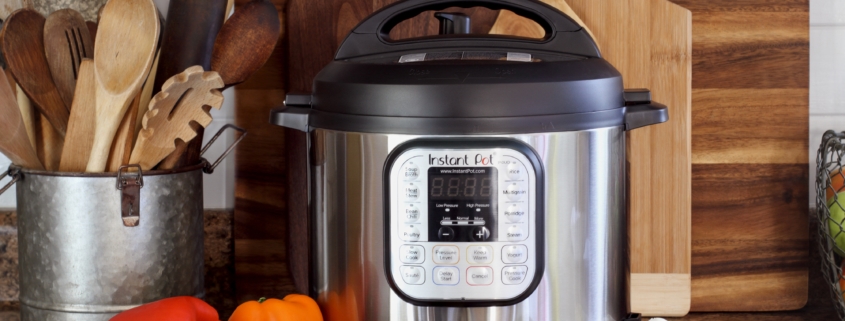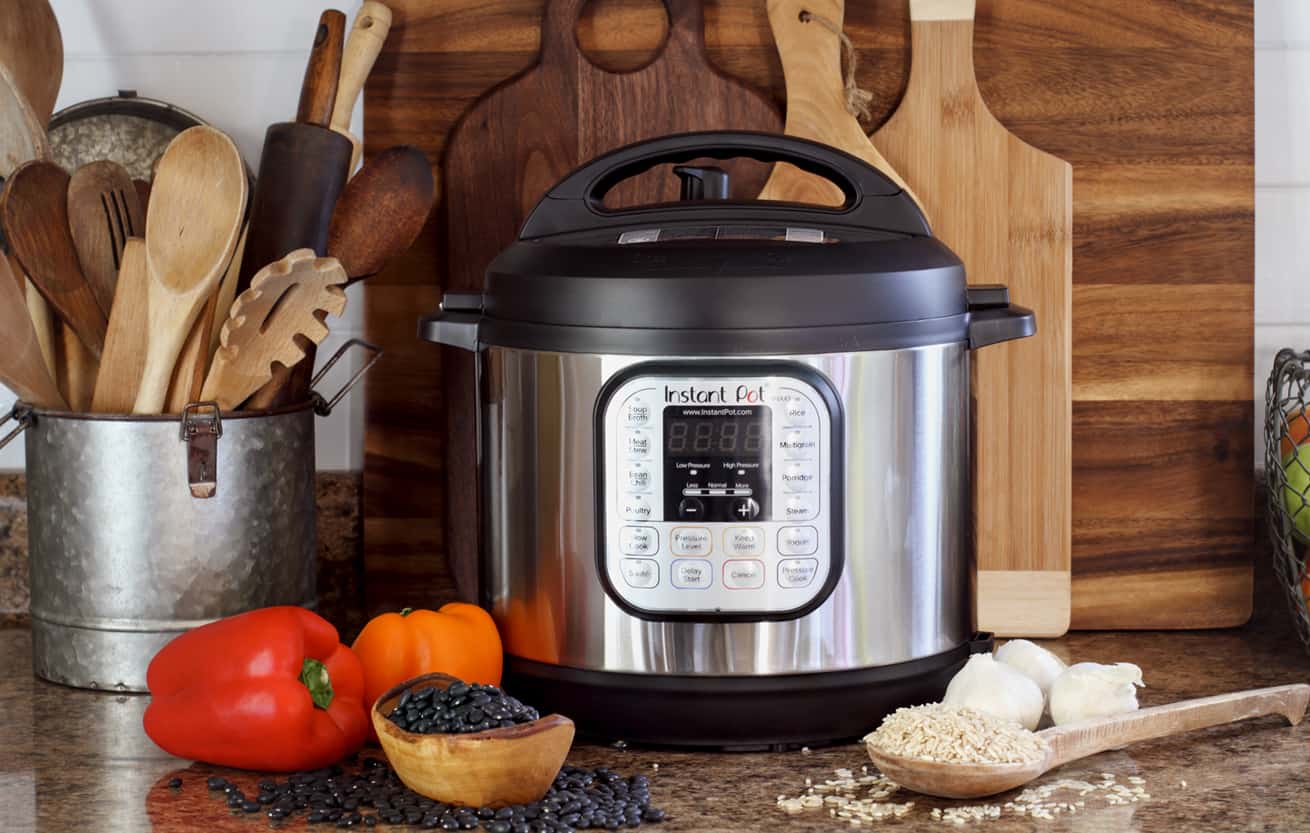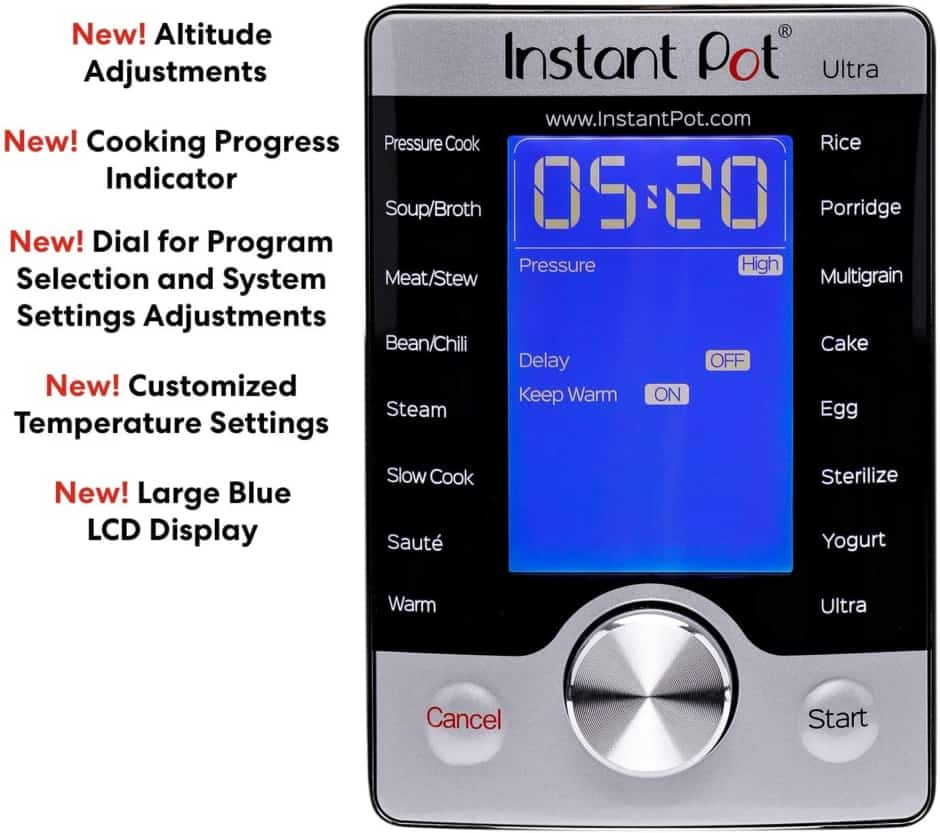How to Fix Instant Pot Slow Cooker Settings
Even before we get started let me say without hesitation that I love my Instant Pot. I don’t know how I ever got along without it. Despite the fact that Instant Pot offers a slow cook option, I also own and frequently use my slow cooker. Instant Pot is fabulous but its slow cook mode is one big disappointment. However, there are ways to work around these shortcomings!
All that said, if you have an Instant Pot, yes, you can use the slow cooker setting to make some dishes successfully. But mostly for me, it has been a crapshoot. Let’s just say that I’ve experienced far more misses than hits.
Every attempt to use Instant Pot’s slow cook option has ended in some level of disappointment. But wait! I have also discovered ways to work around Instant Pot’s slow cook shortcomings.
What is a slow cooker?
A slow cooker is a countertop appliance with a single-use. A slow cooker has three parts: The base heater, an inner crock that holds the food and sits inside the base, and a vented lid that sits on the crock but is never locked in place* to remain undisturbed while cooking. A slow cooker cooks slowly on low heat for a long time.
The heat is so low using very little energy—far less than an oven—that you can set it, leave it for many hours even while you are at work. It is that safe.
A slow cooker does not require supervision. In fact, it works best when left completely undisturbed (unless a specific recipe requires it differently). Come dinnertime, you take the lid off the slow cooker to find a perfectly prepared meal.
And if that’s not enough to love, slow cookers are super easy to use and cheap to operate. Slow cooker is a generic term. There are many brands of slow cookers. One example is Rival’s Crock-Pot, a brand name so familiar it is often used interchangeably with slow cooker.
*Some slow cookers have locks or clips to hold the lid in place but this is for transport only, so the contents don’t spill in the back of car. These clips/locks are never to be engaged during the slow cooking process.
What is an Instant Pot?
Instant Pot is a trademarked brand name for a multicooker, the same way Scotch Tape is a brand of cellophane tape, Kleenex a familiar brand for tissues—and Crock-Pot is one brand of slow cookers.
A multicooker is a kitchen appliance that does many things. But its primary purpose is pressure cooking. Pressure cooking allows you to cook things much faster, so you can make dishes like beef stew or braises in under an hour. It’s what makes the Instant Pot so popular for rushed weeknight meals.
These days, Instant Pot is available in a number of different sizes and models. Instant Pot is far and away the favorite multicooker, boasting more than 30,000 5-star reviews on Amazon. I am one of them. Instant Pot is a nearly perfect appliance—I have two, a 6 qt and 3 qt size—which I use almost daily.
Best known as a pressure cooker, Instant Pot does many other things such as sauté and cook slowly, thus the word “multi.” Instant Pot is available in a number of models and versions, the latest boasting that it is 10 appliances in one with settings for Pressure Cooker, Slow Cooker, Rice Cooker, Yogurt Maker, Cake Maker, Egg Cooker, Sauté, Sterilize, and just look how much more!
Instant Pot in Slow Cook mode
Instant Pot is fabulous, but for its one shortcoming: slow cook mode does not replicate a slow cooker. However, there are ways to work around these shortcomings. Just don’t expect that as with a traditional slow cooker, you can set it and forget it. It requires knowing how to convert a slow cooker recipe, how to adjust for time and temperature, how to create proper evaporation, and possibly the need to lower your expectations.
Recipe Conversion
Recipes specifically developed for a slow cooker most often include liquid such as water, broth or stock. It’s for a reason such as the food being cooked requires that moisture or the recipe intends that you will end up with gravy or sauce. The measurements are specific and meant to be followed.
A slow cooker is designed to allow for the necessary evaporation of some of that liquid and condensation. It’s all integral to the process. Instant Pot’s slow cooking mode does not take this into consideration. It does not contend well with necessary evaporation.
Workaround solution: Generally, reduce the liquid in a slow cooker recipe by 15% -20% when using Instant Pot in slow cook mode. This will allow for the lack of evaporation (unless you purchase an additional accessory, coming up in a bit).
Time
This is the tricky. The feature of a slow cooker that contributes greatly to its successful outcomes is the requirement to not peek. Don’t lift the lid! The rule of thumb is that for every lid-lift during the long slow cooking process, add 25 mins to the cooking time.
With Instant Pot’s slow cook mode, things are so iffy, you almost have to check by opening it to see and to test what’s going on. You might need to add another hour of cooking time! Or, you discover so much liquid you need to pour some off.
Workaround solution: Hold off until you believe the food is done cooking, then remove the lid. Using an instant-read thermometer, check the food’s internal temperature. Also if you see too much liquid, now is the time to pour that off as desired. If needed, return Instant Pot to slow cook mode for a few more minutes or even an additional hour. It’s hard to know.
Temperature
To further confuse things, the Instant Pot features three slow cooker heat settings (not including warm): Less (180°F to 190°F), Normal (190°F to 200°F), and More (200°F to 210°F). But I’m not buying it. I think the temps are lower than stated. For sure, they don’t exactly correspond to the heat settings on most slow cookers.
Slow cookers typically have three settings: Low (around 200°F), High (212°F), Warm (165°F). Although Instant Pot’s Less setting seems like it would match up with a slow cooker’s lowest setting, it seems to run at a much lower temp, which means cooking at a slower pace.
Workaround solution: To emulate a slow cooker’s “Low” setting, use Instant Pot slow cook “Normal”. For a slow cooker’s “High” setting, use Instant Pot’s “More.”
Evaporation
Instant Pot is primarily a pressure cooker with a lid that seals and locks in place—which it must have, given all that pressure! Of course, the pressure valve is left open while using Instant Pot as a slow cooker or else you would be pressure cooking. That allows for some amount of evaporation but far less than a traditional slow cooker. In my experience, that is not sufficient. Slow cookers allow for and require moisture loss through a hole in the slow cooker lid. This means your dish that is slow-cooked in Instant Pot is likely to come out swimming in liquid that was meant to be reduced via evaporation.
Workaround solution. Buy an Instant Pot tempered glass lid that has a hole for steam and evaporation to escape and does not lock into place. This will take care of the evaporation issue.
Everyday Cheapskate participates in the Amazon Services LLC Associates Program, an affiliate advertising program designed to provide a means for us to earn from qualifying purchases, at no cost to you.
More from Everyday Cheapskate
Please keep your comments positive, encouraging, helpful, brief,
and on-topic in keeping with EC Commenting Guidelines
Last update on 2024-04-25 / Affiliate links / Images from Amazon Product Advertising API




















I have a suggestion on the slow cook setting … i had the exact same problem you had … i couldnt figure out why my instapot was slow cooking on such a low setting … realized that it wasnt the instapot, i had too much liquid in it for the machine to work so it wasnt actually slow cooking. Instead it was reverting to the “keep warm” setting. Its pretty frustrating because for all of the digital bells and whistles on this machine it does not have a warning that tells you its too full and therefor not doing anything at all. I probably would have never used one to begin with except it was given to me so I have been playing around with it. I still think my knock off le creuset dutch oven does a pot roast easily as well as this instapot but since i now own an instapot i want to at least attempt to figure it out.
The only instant pot that slow cooks as well as a dedicated slow cooker are the duo Evo plus (discontinued for C8 errors) and Duo crisp (not pro crisp). I have a 7 and 8 quart duo crisp and the slow cook function actually works. 3 lbs pot roast fall apart tender in 5 hrs on high. Other IP not done in 8, 10, or even 12 hours.
I must be an impatient cook! I’ve never tried to slow cook in my IP. now I’ll be looking for slow-cooker recipes, and I’ll keep these tips in mind.
I do have the clear glass lid, I got it for soups, etc.
My slow cooker lid does not have a hole. When the holes first started showing up in slow cookers, they were supposed to be for temperature probes. I use remove the silicone ring when I slow cook in my instant pot and use the Normal setting for slow cooker low and More setting for slow cooker high. So far, so good.
I have not tested/checked every brand, but typically a slow cooker lid does have a hole for steam and condensation to escape. The Instant Pot tempered glass lid, link in the post, has the hole I am referring to. My Hamilton Beach slow cooker has a probe, and there are actually 3 holes in its lid … one for the probe (using it is optional but the hole remains) and two steam holes. I am assuming that your lid does not clamp on tightly, which allows for it to “lift” when steam builds to allow escape.
My Crockpot is 34 years old. It has a plastic lid with no holes in it and works great. No clamps on it to secure the lid.
Ain’t it the truth! I tossed my 6-quart fancy Crock-Pot (it had a programmable timer setting) after getting my 6-quart Instant Pot to save storage space. I quickly realized my mistake the next time I needed to slow-cook a roast-type recipe. I didn’t buy a new 6-quart slow-cooker, but I quickly found a 4-quart model (Hamilton Beach) on sale so that I could make my favorite slow-cook meals that turn out better the old-fashioned, 8-hours-on-low way. And here’s my quasi-scientific understanding of why or why not:
The Instant Pot’s slow cook feature works better with smaller slow-cook soup and stew recipes where the conductive metal pot can easily send heat through the liquid. The radiant heat available from the standard slow-cooker ceramic inserts works better for other recipes.
I couldn’t agree with you more Mary. I even bought the lid that you suggest and still find that I need to cook on the More mode and use less liquid. The one thing I really like about using the Instant Pot is that I can use the saute mode when I first add the food into the pot. Then turn it to slow cooker mode. My meals come out much more flavorful than with the traditional crock pot.
Doesn’t it feel like someone invented Instant Pot and then at the last minute, impulsively said, “Let’s add another button”? Ha!
I’m glad I’m not the only one that has had “misses” with my InstaPot on the slow cook feature. I had given my CrockPot away because everyone said how great the InstaPot was and I wouldn’t need anything else….I also went and purchased another CrockPot. There are just some things that the InstaPot cannot do as well.
I have been using my instant pot in a combines pressure cook-slow cook mode. I pressure cook then switch to slow cook as soon as the pressure is gone. This has been working well for me with soups, stews and beans. My slow cooker scorches most things on low so the IP has been great
GREAT tip, Kimberly! I love this … Thanks
Do you a Quick or Natural Release on the pressure?
America’s Test Kitchen noticed the same problem with slow-cooking in the Instant Pot, Mary.
I’ve had a Duo 5 quart and a Lux Mini 3 quart for several years. No problems with slow cooking in either one.